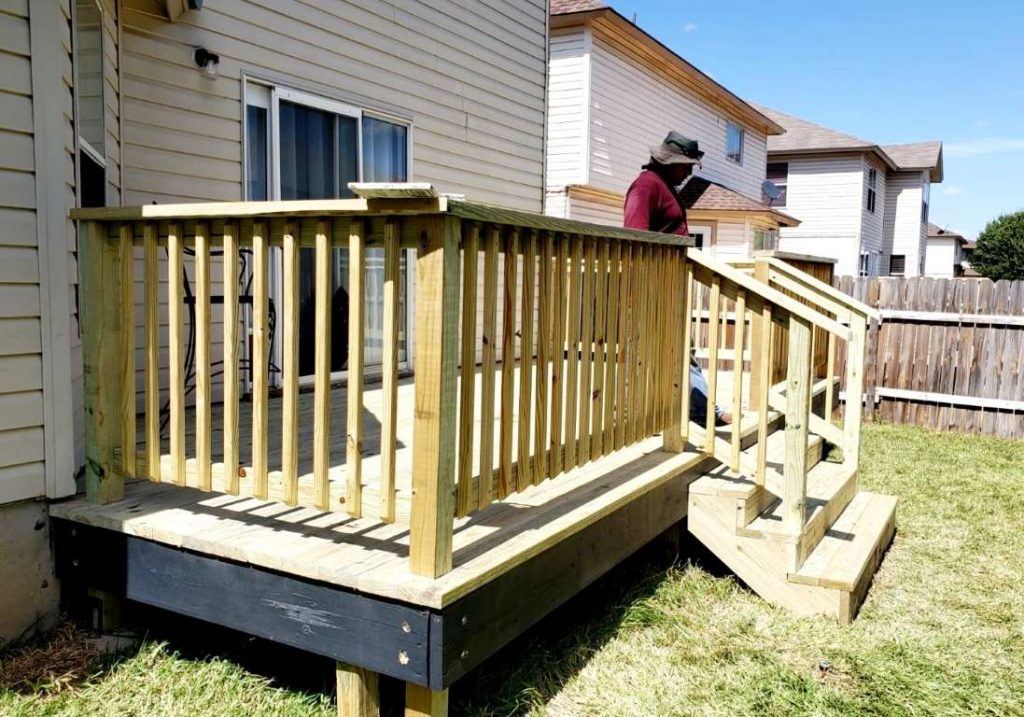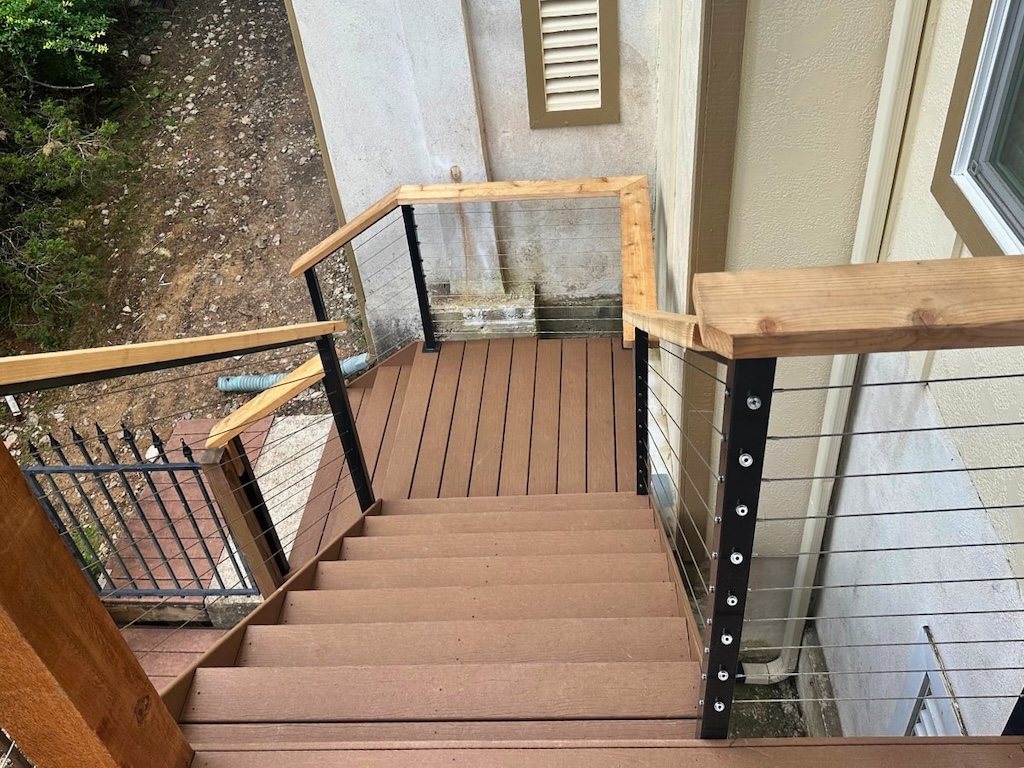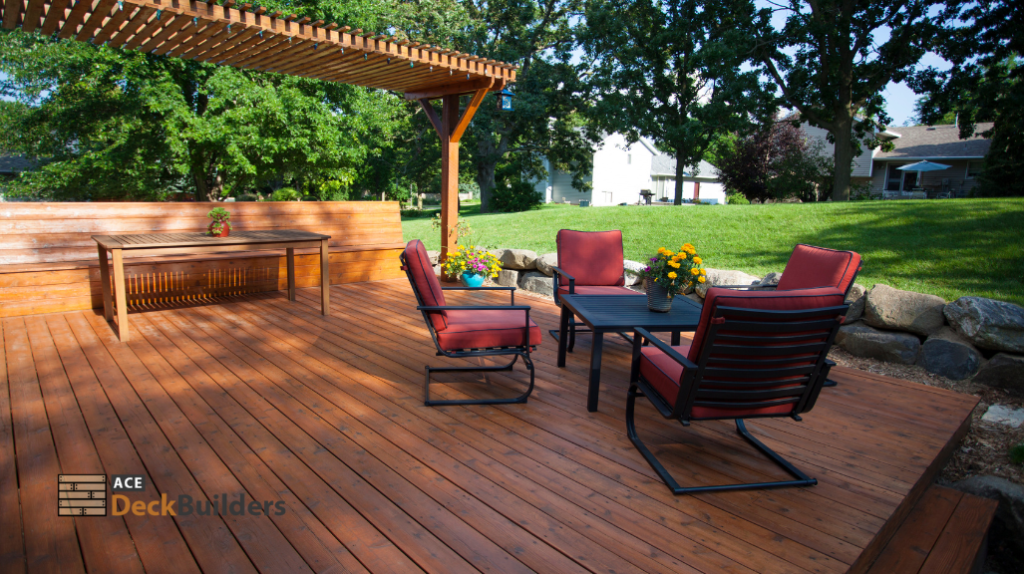TL;DR
Choose deck repair when problems are isolated (a few bad boards, loose rails, minor footing issues) and the frame is structurally sound. Choose replacement when you see ledger damage, widespread rot, undersized framing, failing footings, or recurring code issues—especially on older decks. For an apples-to-apples decision, price both options with identical scope (materials, rail length, stair count) and compare the 10-year total cost. If you want a benchmark for communication, documentation, and craftsmanship, start by browsing the approach and portfolio at Ace Deck Builders.
Table of Contents
ToggleWhy This Decision Matters in Austin

Central Texas is tough on decks. High UV, heat cycles, sudden downpours, and clay soils test every fastener, footing, and board. In this environment, the wrong choice—over-repairing a failing frame or over-replacing when a targeted fix would do—burns time and money. The right call begins with an honest look at structure, not surface.
A great contractor will start by separating cosmetic defects (splinters, fading) from structural risks (ledger failure, post/beam movement, rail instability). In the sections below, we’ll help you do the same.
The Quick Triage: Safety First
Before you think about colors or rail styles, address life-safety risks:
- Ledger & flashing — The ledger connects your deck to the house. Rusted fasteners, missing/failed flashing, or rot here is high-risk.
- Footings & posts — Heaving, sinking, or rotten posts/footings lead to movement you can feel.
- Framing & connections — Undersized spans, split beams, missing hangers, or corroded hardware compromise the deck’s backbone.
- Railing & stairs — Loose posts, wobbly rails, improper baluster spacing, and unsafe rise/run are immediate hazards.
If any of the above fail a basic inspection, lean toward deck repair services or a major structural rehab that essentially rebuilds the deck’s core.
When a Repair Is the Smart Move
Repairs shine when the frame passes inspection and problems are localized:
Good repair candidates
- Decking surface wear with solid joists (swap boards, upgrade fasteners).
- Isolated rot at a stair stringer or a few joist ends (sister or replace affected members).
- Loose railing sections where posts and blocking are accessible for reinforcement.
- Minor footing issues (e.g., one sonotube needs remediation) when other footings are stable.
- Hardware refresh (hangers, post bases, corrosion-resistant fasteners) on otherwise sound framing.
When repair wins
- Your goal is to extend life 3–7 years while you plan a future redesign.
- You’re prepping a sale and want the deck safe and code-clean without a complete remodel.
- You’ll change the footprint or materials later, but for now, you need safety and function.
Pro tip: Request photos of each repair area before and after, along with a brief note from the contractor explaining how the repair restores capacity and ensures code compliance.
When a Full Replacement Is Safer (and Cheaper Long-Term)
Specific findings point strongly to replacement:

- Ledger damage: Rot, pulled fasteners, or chronic water intrusion.
- Widespread rot: Multiple joists/beams compromised, not just a corner.
- Undersized framing: Span tables not met; bouncy feel persists even after spot fixes.
- Failing footings: Heave/settlement across the deck; posts in soil without proper bases.
- Railing system overhaul: If most posts and connections require rebuilding, a patch approach is unlikely to be effective.
- Code resets: Older decks that miss several modern safety/code requirements are often cheaper to rebuild than to retrofit piecemeal.
Replacement lets you fix the root causes (flashing, spans, footing depth/diameter) and upgrade materials for Austin’s climate in one pass—usually increasing lifespan and reducing low maintenance.
If you want to understand the end-to-end workflow, skim a specialist’s overview of deck replacement in Austin to see how drawings, permits, inspections, and punch lists come together on a rebuild.
Conversely, when the frame is sound and issues are contained, a focused tune-up can be faster and cheaper. A plain-English walkthrough of deck repair in Austin shows where structural triage beats starting over.
How do you spot early problems? This quick read on identifying signs of deck damage early can help you catch issues before they snowball.
Cost Math: Upfront vs. 10-Year Total
Upfront: Repairs can range from a few hundred dollars (hardware refresh) to several thousand (stair rebuild, rail system replacement). A complete replacement for typical Austin decks commonly ranges from the low teens to the upper twenties (and beyond for large or complex layouts), with rails/stairs and material choice driving most variance.
10-year Total: In Austin heat and UV, composite/PVC often lowers maintenance cost and keeps appearance consistent, while cedar costs less up front but needs regular stain/seal cycles. When the frame is questionable, repeatedly spending on deck repair costs can exceed the cost of rebuilding once, without delivering the same safety, look, or warranty.
Decision tip: Request two itemized proposals—one for repair, one for replacement—with the same assumptions for rail length, stair count, skirting, and lighting. Then ask for a 10-year cost comparison, including maintenance.
Materials: Cedar vs. Composite/PVC on Austin Heat
- Cedar/softwoods — Cooler underfoot; lower upfront; require consistent maintenance (12–24 months typical).
- Composite — Lower routine maintenance, stable color; some lines run hotter—lighter hues help.
- PVC — Excellent moisture resistance and top color stability; highest upfront but minimal ongoing care.
Regardless of material, framing quality (spans, ventilation, fasteners) dictates performance. Composite or PVC over undersized, poorly ventilated framing won’t achieve its promise.
Code & Permits: What Triggers What
Many replacements involve permit review and three inspection gates:
- Footings — The inspector verifies the depth/diameter and soil conditions before concrete placement.
- Framing — Ledger flashing, fastener patterns, joist spans, and rail post connections must be visible (no decking yet).
- Final — Guard heights, stair geometry, electrical trim (if included), general safety.
Repairs that affect structure or life-safety can also trigger permits. Your contractor should inform you about what requires a permit, who is responsible for the application, and who will meet with inspectors.
Timeline & Disruption: What to Expect
Repairs (with no permit or only minor admin) can often be scheduled quickly and finish in 1–5 days, depending on the scope.
Replacements typically involve design and permit lead time, followed by 2–4+ weeks on site once materials are on hand and inspections are sequenced. Weather and inspection readiness matter—prepping details so inspectors can see them is the #1 schedule safeguard.
How to Compare Bids Fairly (Repair and Replacement)

Ask each contractor for the same data:
- Plan or detail sheet (ledger flashing, post bases, joist spacing, rail post connection).
- Itemized line items (framing species/size, decking series, rail system, stairs, skirting, fascia, lighting).
- Allowances (rock excavation, hidden rot remediation, extra piers).
- Exclusions (irrigation repair, landscaping, furniture).
- Permits & inspections (who submits and meets inspectors).
- Schedule with hold points (footing, framing, final).
- Warranty (workmanship + handling of manufacturer claims).
When quotes differ widely, it’s almost always a scope mismatch—especially railing length, stair count, or decking series.
Decision Checklist (Print-Friendly)
Safety & Structure
- Ledger and flashing pass inspection are easily repairable
- Footings stable; posts on proper bases (not in soil)
- Joist spans and sizes meet tables; no widespread rot
- Rail posts solid; stair rise/run and handrails code-compliant
Scope & Cost
- Two itemized proposals (repair vs. replacement) using the same assumptions
- 10-year total cost comparison (maintenance cycles included)
- Clear allowances/exclusions; change-order process in writing
Permits & Inspections
- Who pulls permits and meets inspectors is documented
- Gantt schedule with inspection hold points
Materials & Comfort
- Sample boards for heat testing; barefoot comfort considered
- Ventilation/gapping/fasteners appropriate to material and climate
Warranty & Closeout
- Written workmanship warranty
- Care packet: cleaning, stain schedule (if wood), warranty contacts
FAQs
Any combination of ledger damage, widespread rot, failing footings, or broken boards typically necessitates replacement. Patching these piecemeal often costs more and still won’t meet modern code.
Only if the existing structure meets current standards and passes a careful inspection, many older frames require upgrades to their ledger/footing/joist to ensure safety and code compliance.
Some darker boards tend to run hot in direct sunlight. Choose lighter tones, incorporate shade, and ask for sample boards you can heat-test in your yard.
A typical single-level replacement with standard rail and one stair run often completes in 2–4 weeks on site, assuming clean inspection passes and normal weather.
Sometimes—but only if repairs are truly localized and the frame is solid. If you’ll replace soon anyway, investing heavily in cosmetic fixes is rarely efficient.
Get the Right Answer, Not the Expensive One
Still torn between repairing and replacing? We’ll inspect the frame, show you photos and detail sheets, and present two itemized options—then map schedule and inspection milestones for each. Start with a free deck estimate in Austin and get a clear, side-by-side decision you can trust.
